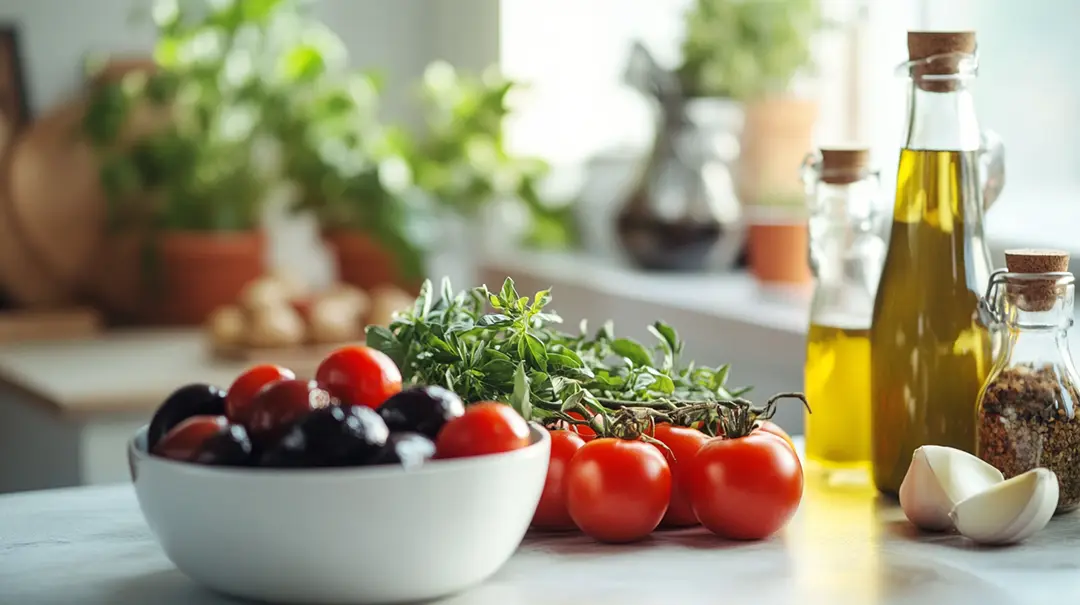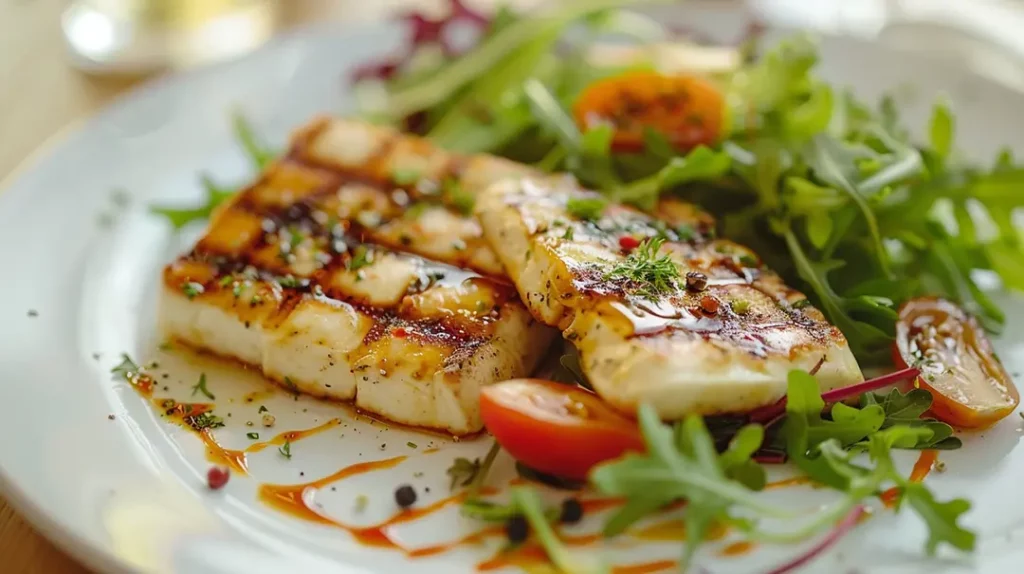
Mediterranean cuisine delights with its bold flavours, fresh ingredients, and rich textures. From olive oil's fruity notes to citrus's brightness, each dish tells a story of tradition and taste. Elizabeth David's book introduced Brits to this culinary paradise, transforming kitchens forever.
The allure of Mediterranean cuisine lies in its vivid flavours, diverse textures, and emphasis on fresh, high-quality ingredients. From the tang of lemon to the rich fruitiness of olive oil, the Mediterranean diet is a celebration of tastes that have captured the hearts of food lovers worldwide. The renowned British food writer Elizabeth David introduced these delightful flavours to post-war Britain with her seminal book “A Book of Mediterranean Food” (1950), transforming the nation’s culinary landscape forever. The Mediterranean is more than a region; it’s a culinary paradise that seduces the senses with its vibrant colours, intoxicating aromas, and diverse flavours. Picture sun-soaked markets overflowing with fresh produce, fishermen hauling in the day’s catch, and the air thick with the scent of herbs and spices. From the rocky coasts of Greece to the bustling souks of Morocco, Mediterranean cuisine offers a feast for the senses that promises both delight and discovery. It’s no wonder that Elizabeth David’s pioneering work brought these exquisite tastes to the forefront of British kitchens, transforming our approach to food and dining.
The Mediterranean culinary landscape is a rich tapestry of flavours and textures. Central to this cuisine is olive oil, providing a fruity and slightly bitter note that enhances many dishes. Fresh herbs such as basil, oregano, and thyme add aromatic nuances, while citrus fruits and vinegars lend brightness and acidity. Garlic and onions create a savoury foundation for countless recipes. The textures in Mediterranean cuisine are equally varied, ranging from the creaminess of Greek yoghurt and hummus to the crispness of fresh vegetables, the tenderness of grilled meats and seafood, and the heartiness of legumes and grains.
Olive Oil: A staple of Mediterranean cooking, olive oil is generously used in dressings, marinades, and for cooking. It imparts a rich, fruity, and occasionally slightly bitter taste that enhances many dishes.
Herbs and Spices: Fresh herbs such as basil, oregano, rosemary, thyme, parsley, and mint are extensively used, adding aromatic and sometimes peppery notes. Spices like cumin, coriander, paprika, saffron, and sumac bring earthy, warm, and occasionally tangy flavours.
Citrus and Vinegar: Lemon juice and various vinegars (balsamic, red wine vinegar) add acidity and brightness, balancing richer flavours.
Garlic and Onions: These ingredients are essential in many Mediterranean recipes, providing depth and a savoury, pungent base.
Tomatoes: Fresh, sun-ripened tomatoes are a key component in salads, sauces, and stews, offering a sweet and tangy flavour central to many dishes.
Cheese: Varieties like feta, halloumi, manchego, and ricotta are common, each bringing unique textures and flavours from creamy and tangy to firm and salty.
Seafood: Fresh fish, shrimp, squid, and shellfish are staples, often simply prepared to highlight their natural flavours with lemon, olive oil, and herbs.
Legumes and Grains: Chickpeas, lentils, beans, couscous, and various types of bread and pasta are prevalent, adding earthy and nutty flavours as well as hearty textures.
Creamy and Smooth: Greek yoghurt, hummus, and various cheese spreads offer creamy textures that contrast with crunchy vegetables and bread.
Crisp and Fresh: Salads made with fresh vegetables like cucumbers, bell peppers, and leafy greens provide a refreshing crunch.
Tender and Juicy: Grilled or roasted meats and seafood are often tender and juicy, with a slight char from cooking methods like grilling or broiling.
Chewy and Firm: Cheeses like halloumi and manchego have a firm, chewy texture, especially when grilled or fried.
Hearty and Filling: Legumes and grains like chickpeas, lentils, and couscous offer a hearty texture that is both filling and satisfying.
Crunchy and Nutty: Nuts such as almonds, pine nuts, and pistachios are frequently used in salads, pestos, and as toppings, adding a crunchy texture and nutty flavour.

Eastern Mediterranean: Focuses on yoghurt, feta cheese, parsley, sumac, and mint. Greek salads, Turkish kebabs, and Lebanese mezze are typical dishes.
Southern Europe: Utilises tomatoes, garlic, capers, and pine nuts. Italian, Spanish, and Southern French cuisines prominently feature olive oil, wine, and herbs like rosemary and thyme.
North Africa: Known for bold spices such as cumin, coriander, saffron, and cinnamon. Dishes often include dried fruits like apricots and raisins, and meats like lamb and chicken.
Mediterranean cuisine is a tribute to fresh, high-quality ingredients, simple preparation methods, and balanced flavours, making it both delicious and healthy.

A culinary journey through the Mediterranean unveils a wealth of iconic dishes that highlight the region’s unique flavours. Greek salad (Horiatiki) combines fresh vegetables with tangy feta cheese, while falafel offers a crispy, protein-rich option made from chickpeas or fava beans. Other popular dishes include creamy hummus, savoury shawarma, and the hearty egg dish shakshuka. Italian contributions like Caprese salad and topped flatbread emphasise the simplicity and quality of fresh ingredients. North African couscous and stuffed grape leaves (dolma) round out the diverse array of Mediterranean specialities, each offering a distinct taste of the region’s rich culinary heritage.

At Med.kitchen, our passion lies in crafting exceptional culinary experiences through our online platform. We specialise in sharing a wealth of knowledge via articles, recipes, courses, and online mentoring, aiming to inspire both novice and seasoned chefs alike. Our focus has shifted from private dining to being an online source of gastronomic inspiration, allowing you to explore and refine your culinary skills from the comfort of your home..